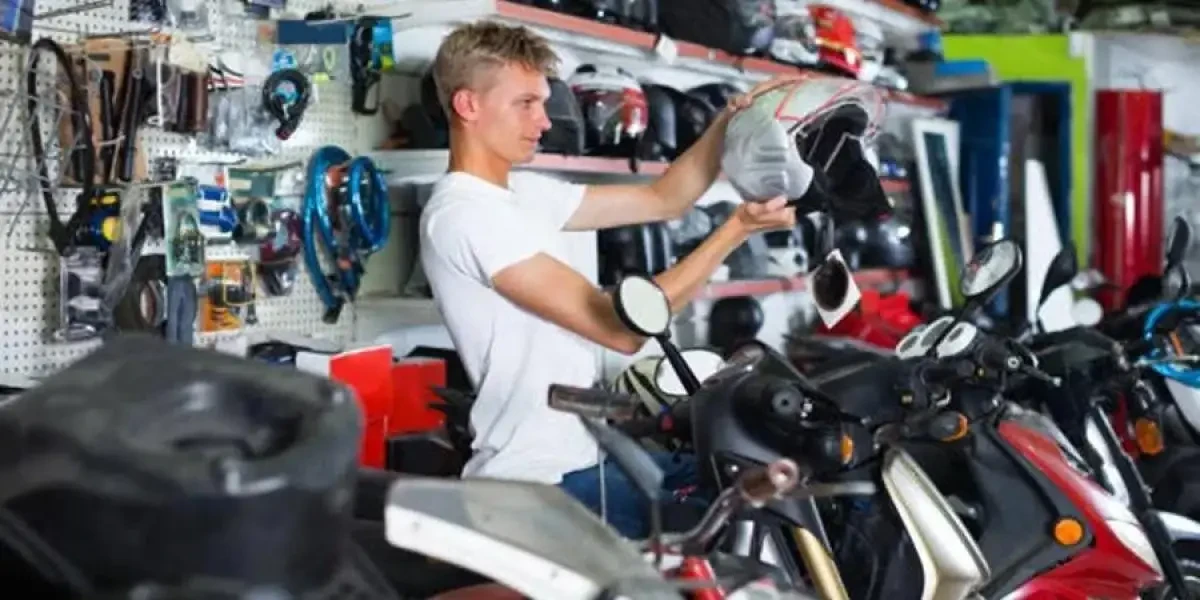Your Best Motorbike Shop for Quality Parts and Accessories
Your Best Motorbike Shop for Quality Parts and Accessories
Blog Article
Grasping Motorbike Gears: Just How to Optimize Your Riding Experience
In the world of motorcycling, mastering the art of gear control is critical for enhancing your riding efficiency. Correctly recognizing and using motorcycle gears can significantly influence control, fuel, and velocity performance, changing an average ride right into a seamless, thrilling journey.
Understanding Equipment Mechanics
At the core of motorbike dynamics, gear auto mechanics play a crucial role in converting engine power right into motion, ultimately dictating speed and control. The equipment ratios, very carefully created, identify the partnership between engine transformations and wheel turns, affecting velocity and fuel efficiency.
Recognizing gear mechanics begins with recognizing the value of the transmission, which houses numerous equipments of differing dimensions. These gears communicate through a process understood as meshing, where teeth of various gears engage to transfer power. The accuracy of this communication is crucial; any misalignment or damage can bring about ineffective power transfer, hindering performance. In addition, the setup and dimension of equipments influence the motorcycle's ability to take care of different lots and rates.
In addition, the idea of gear shifting is important to optimizing performance. Smooth and timely changes make sure that the engine operates within its optimum power band, protecting against unnecessary pressure and boosting long life (motocross parts nz). By comprehending these mechanical ins and outs, riders can attain a harmonious blend of performance, power, and control, raising their riding experience
Timing Your Shifts
Shift timing mastery is vital for enhancing motorcycle efficiency and improving the riding experience. Appropriately timed changes make sure that the engine operates within its optimal power band, which is crucial for keeping control, attaining smooth acceleration, and making certain the longevity of the bike. Motorcyclists need to create an user-friendly feeling of when to change gears, which entails comprehending the partnership between engine revolutions per min (RPM) and rate.
To master change timing, pay very close attention to the engine's audio and feel, as these offer crucial ideas about when to alter gears. The optimal change point typically happens when the engine approaches the top variety of its power band without reaching the redline. Changing too early can cause a lack of power, while moving as well late might trigger unneeded engine stress
Additionally, road problems and riding design impact shift timing. In comparison, during highway riding, less shifts at higher rates can be a lot more proper.
Enhancing Fuel Efficiency
While understanding bike equipments is important for performance, enhancing gas performance is equally crucial for both economic and ecological reasons. Optimal gas usage not just minimizes functional costs but additionally reduces the ecological footprint of riding. To achieve this, one should recognize the intricate relationship between equipment option and engine performance.
Riding in a higher equipment at reduced speeds can lead to engine carrying, which is harmful to both fuel economic situation and engine wellness. On the other hand, riding in lower gears at high rates results in unneeded fuel consumption.
Additionally, normal maintenance plays an essential function in fuel effectiveness. Ensuring that the motorcycle is well-tuned, with clean air filters and properly blew up tires, can minimize and enhance the rules of aerodynamics gas waste. Moreover, embracing a riding style that embraces gradual acceleration and smooth deceleration can contribute to much better fuel economic situation.

Strategies for Smooth Transitions
Achieving smooth gear changes is essential to boosting the riding experience and here are the findings making certain the longevity of a motorcycle's transmission system. Appropriate equipment moving not just adds to a seamless adventure but likewise minimizes deterioration on the mechanical parts. To grasp the art of smooth changes, riders have to concentrate on a couple of key techniques.

Second of all, clutch control plays an essential role. Engaging and disengaging the clutch smoothly requires practice. The clutch lever must be launched slowly, permitting a seamless transfer of power from the engine to the wheels without causing a jolt or sudden movement.

Adapting to Road Problems
Navigating varied roadway problems is a crucial skill for any type of motorcyclist aiming to maintain control and security. Whether you're riding on damp surface areas, crushed rock roadways, or navigating doglegs, your ability to adjust your gear use and riding method is paramount. Comprehending just how to adjust your equipments properly can considerably affect grip and security, guaranteeing a more secure trip.
In comparison, when riding on crushed rock or uneven terrain, lower equipments are better. Reduced gears give much better control and permit you to react even more swiftly to unanticipated modifications in the roadway surface area.
Sharp contours demand accurate equipment administration to balance speed Homepage and control. Downshifting prior to going into a curve can help preserve energy while making certain the motorbike remains stable throughout the turn. Consistent practice in diverse problems boosts your ability to predict and react to modifications in roadway appearance and slope.
Final Thought
Mastering bike gears dramatically improves the riding experience by boosting control, gas, and acceleration performance. Adapting gear choice to different road conditions, such as using higher gears on wet surface areas and reduced gears on gravel, further enhances handling and safety and security.
Comprehending gear mechanics starts with acknowledging the importance of the gearbox, which houses several gears of varying dimensions. These equipments interact with a process recognized as meshing, where teeth of different gears involve to transmit power (motorcycle parts nz). Gentle changes to the throttle during equipment shifts can protect against jerky activities and maintain a consistent riding rate
Whether you're riding on wet surfaces, crushed rock roads, or navigating sharp turns, your ability to adapt your equipment usage and riding strategy is extremely important. Adapting gear option to different roadway problems, such as making use of higher gears on damp surfaces and reduced gears on crushed rock, more boosts handling and security.
Report this page